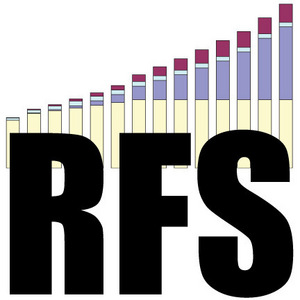EPA approves new cellulosic, advanced biofuel pathways

February 26, 2013
BY Erin Krueger
The U.S. EPA has published a new final rule, qualifying additional fuel pathways under the renewable fuel standard (RFS) for advanced biofuel, cellulosic biofuel and biomass-based diesel. The rulemaking covers two new feedstocks, camelina and energy cane. It also qualifies renewable gasoline and renewable gasoline blendstocks made from certain feedstocks as cellulosic biofuel.
Under the new rule, ethanol, renewable diesel (including jet fuel and heating oil) and renewable gasoline blendstock produced using energy cane feedstock can now qualify to generate cellulosic biofuel renewable identification numbers (RINs).
According to the EPA, for the purposes of this rulemaking, energy cane has been defined as a complex hybrid in the Saccharum genus that that has been bred to maximize cellulosic rather than sugar content.
Within the final rule, the EPA addresses several comments made by members of the public during the rulemaking process, including those related to invasiveness and land use change potential. The EPA states that energy cane does not raise significant concerns about the threat of invasiveness. Regarding land use change, the EPA specifies that energy cane is most likely to be grown on land once used for pasture, rice, commercial sod, cotton or alfalfa, which would have a less international direct impact than switchgrass because those commodities are not as widely traded as soybeans or wheat. “Given that energy cane will likely displace the least productive land first, EPA concludes that the land use GHG impact for energy cane per gallon should be no greater and likely less than estimated for switchgrass,” said the agency in the rulemaking.
Advertisement
According to the rule, EPA believes that cellulsoic biofuels produced from the cellulose, hemicellulose and lignin portions of energy cane will have similar or better lifecycle GHG impacts than biofuel produced from switchgrass.
Biodiesel and renewable diesel (including jet fuel and heating oil) made from camelina feedstock are now eligible for biomass-based diesel or advanced RINs. In addition, camelina-based naphtha and liquefied petroleum gas can qualify for advanced biofuel RINs.
While the EPA notes in the rulemaking that some parties submitting comments on the proposed camelina pathways expressed concern over the potential threat of invasiveness, the EPA states that it believes the production of camelina is unlikely to spread beyond the intended borders in which it is grown.
Advertisement
The EPA also specified that the crop is currently being grown on approximately 50,000 acres of land throughout Montana, Washington, North Dakota and South Dakota. Overall, the EPA estimates that approximately 9 million acres of land in a wheat/fallow rotation is available for camelina production nationwide.
“Current information suggestion that camelina will be produced on land that would otherwise remain fallow,” said EPA in the rulemaking. “Therefore, increased production of camelina-based renewable fuel is not expected to result in significant land use change emissions; however, the agency will continue to monitor volumes through EMTS to verify this assumption.”
Regarding renewable gasoline and renewable gasoline blendstocks, the rulemaking qualifies fuels produced from crop residue, slash, pre-commercial thinnings, tree residue, annual cover crops, and cellulosic components of separated yard waste, separated food waste and separated municipal solid waste (MWS). The rule also specifies that, when utilizing natural gas, biogas and/or biomass as the only process energy source, thermochemical pyrolysis, thermochemical gasification, biochemical direct fermentation, biochemical fermentation with catalytic upgrading can all be used with the listed feedstocks to generated fuel qualifying as cellulosic biofuel. In addition, any other process that uses biogas and/or biomass as the only process energy sources to convert the approved gasoline and renewable gasoline blendstock feedstocks into biofuel also qualifies for cellulosic RINs.
A full copy of the rulemaking is available on the EPA website.
Related Stories
The USDA significantly increased its estimate for 2025-’26 soybean oil use in biofuel production in its latest World Agricultural Supply and Demand Estimates report, released July 11. The outlook for soybean production was revised down.
The U.S. Energy Information Administration maintained its forecast for 2025 and 2026 biodiesel, renewable diesel and sustainable aviation fuel (SAF) production in its latest Short-Term Energy Outlook, released July 8.
XCF Global Inc. on July 10 shared its strategic plan to invest close to $1 billion in developing a network of SAF production facilities, expanding its U.S. footprint, and advancing its international growth strategy.
U.S. fuel ethanol capacity fell slightly in April, while biodiesel and renewable diesel capacity held steady, according to data released by the U.S. EIA on June 30. Feedstock consumption was down when compared to the previous month.
XCF Global Inc. on July 8 provided a production update on its flagship New Rise Reno facility, underscoring that the plant has successfully produced SAF, renewable diesel, and renewable naphtha during its initial ramp-up.
Upcoming Events










